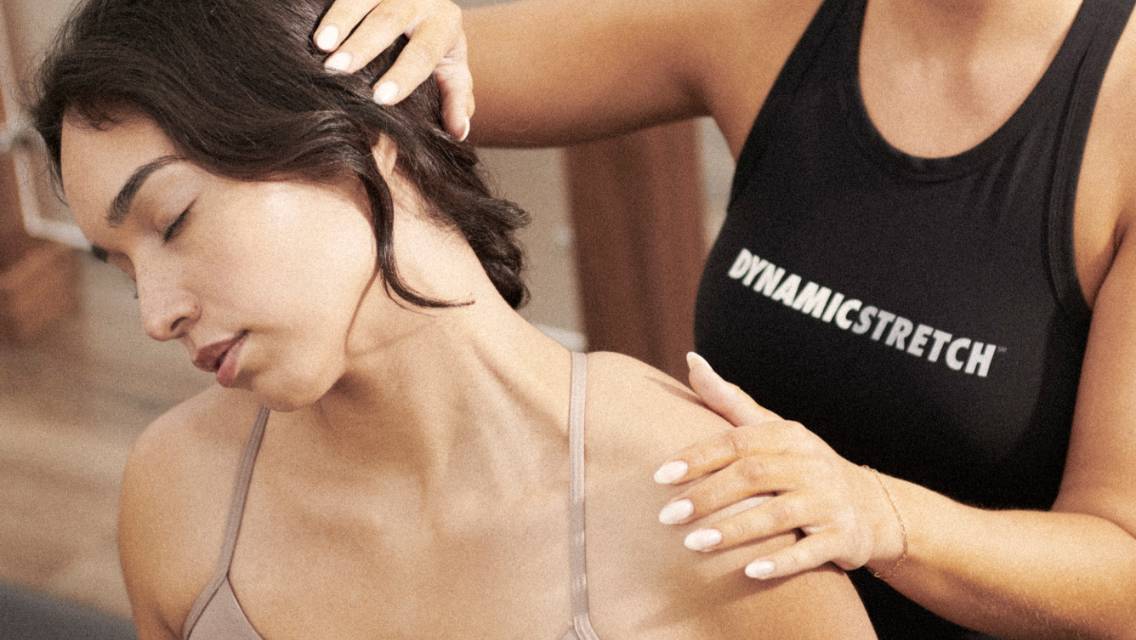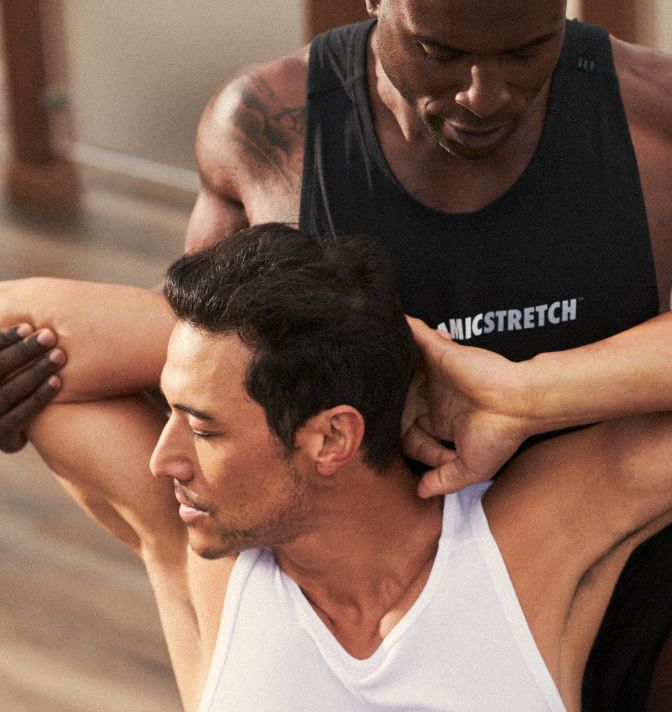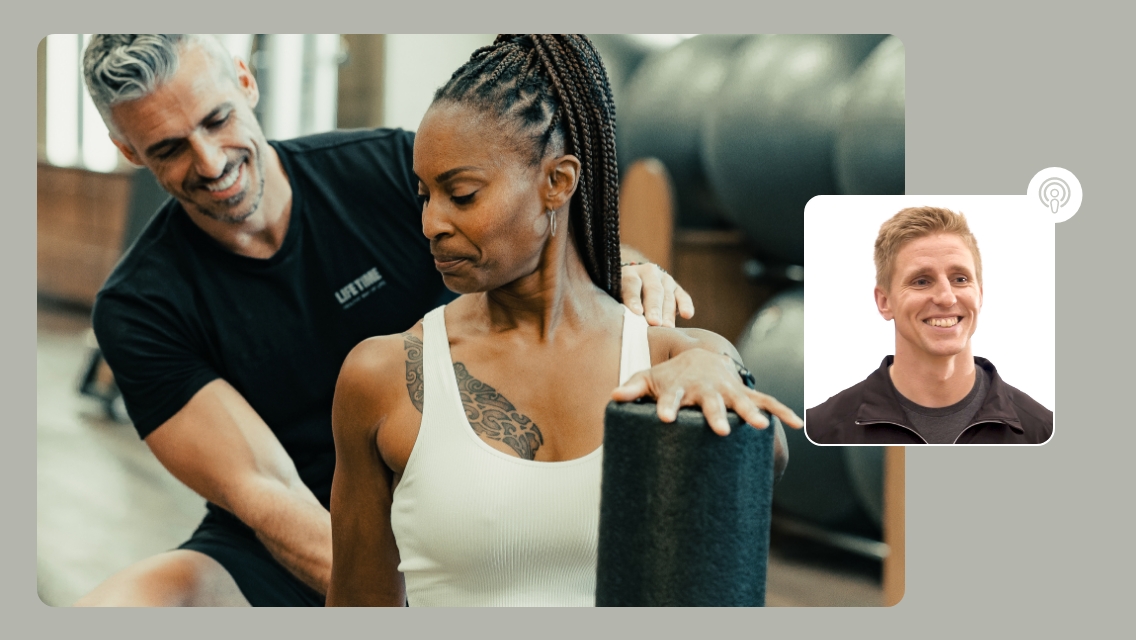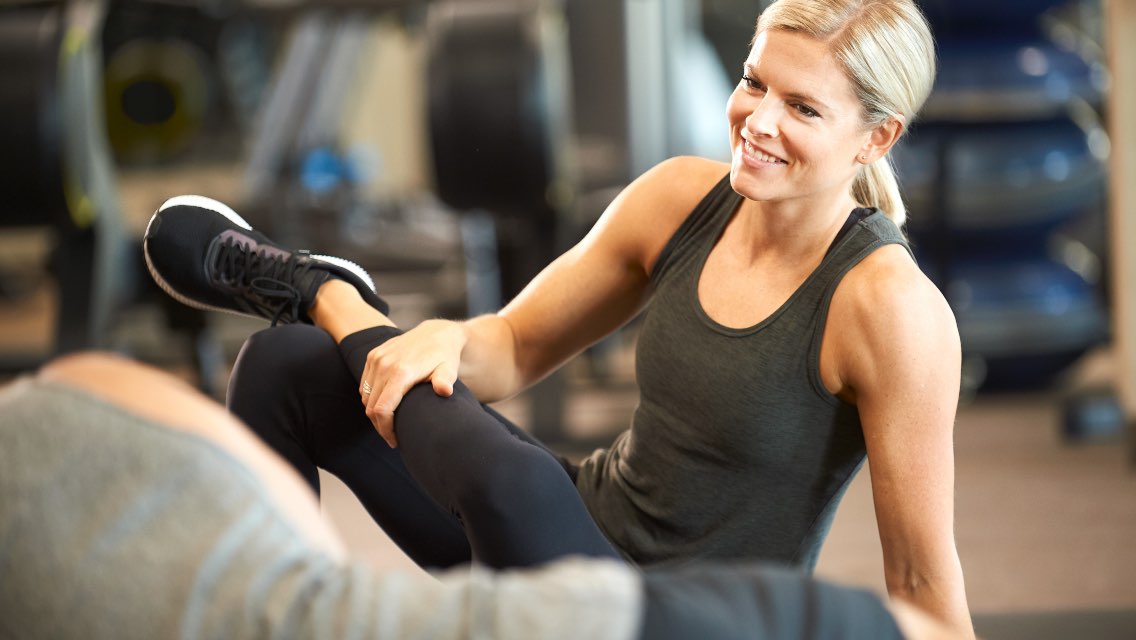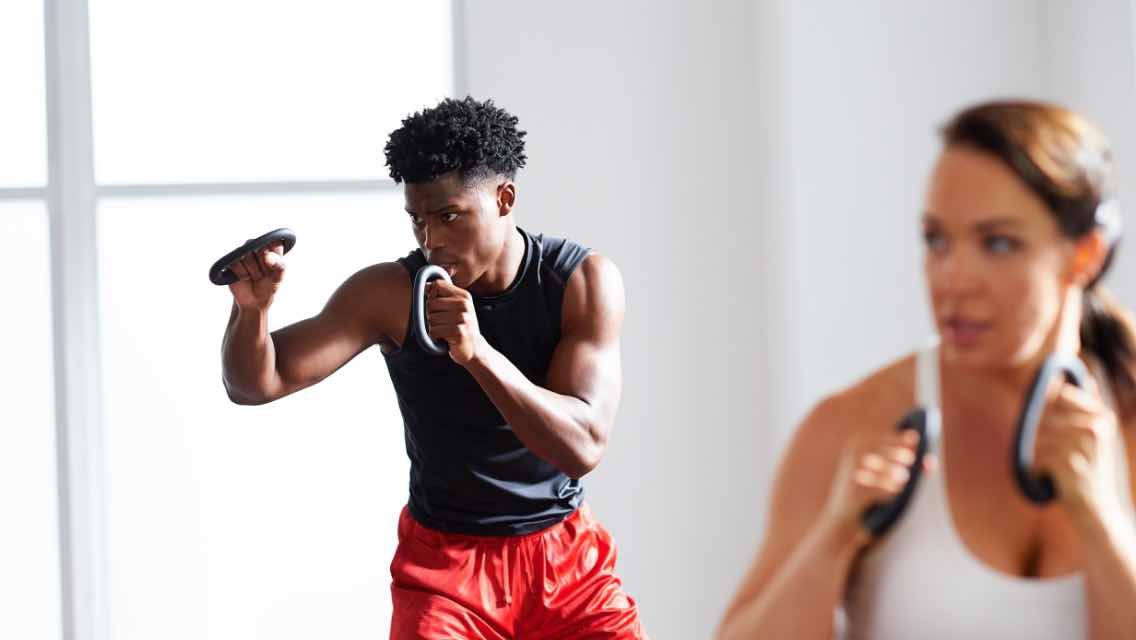Stretching is a common recommendation for managing and relieving stress in the body — whether that tension stems from exercise or other causes. It requires a different mindset than strength or endurance training, yet it’s essential to proper recovery from those endeavors. Settling into the parts of your body that are frequently under heavy tension can help you experience the release of those hard-worked muscles and prevent injury.
Most fitness injuries aren’t sudden events that come out of nowhere. Your body is often trying to tell you what it’s feeling through pain, stiffness, or discomfort. When you ignore those sensations or try to push through them, problems arise.
To help you relieve tense muscles, promote recovery, and ward off injury, try a few of the stretches I’m demonstrating here. You can do them first thing in the morning, after a workout, or any time your body needs a little extra care.
1. Lateral Neck Stretch with Twist
If you spend long stints on the computer, your phone, or driving, this is the stretch for you. It opens the scalene and trap muscles that support your neck and bring gentle rotation to your spine.
- Start in a comfortable seated position. If you’re on the floor, you can cross your legs; if you’re on a chair or bed, let them hang down.
- Place one hand on top of your head and slowly tilt your head toward the same side shoulder until you feel a stretch in the opposite side of your neck. Hold for a few seconds.
- To focus more on the back of the neck, tilt your eyes down to look at the floor. To focus more on the front, tilt your eyes up toward the ceiling.
- Slowly release your head and return to a neutral position. Switch arms and repeat on the opposite side.
- Repeat three to five times on each side.
2. Seated Fish Stretch
This stretch is a great heart opener. It reverses the common pattern of slouching many of us experience during the day and stretches your delts, pecs, and throat.
- Start in a comfortable seated position with your hands planted about six to eight inches behind your body.
- Puff your chest out as much as possible and gently allow your head to tilt backward, as if the crown of your head is going to touch the floor behind you. Hold for a few seconds.
- Keeping your chest puffed out, gently lift your head, and begin to tuck it forward until your chin touches the bottom of your neck or top of your chest. Hold for a few seconds.
- Repeat three to five times.
3. Shoulder Rolls
This is an easy movement that has amazing benefits for stiff shoulders. It uses four distinct holds to encourage mobility through the rotator cuffs, chest, and upper back without applying any excessive tension.
- Start in a comfortable seated positions with your hands and arms resting naturally at your sides or gently on the tops of your thighs; keep your neck upright.
- Raise your shoulders straight up toward your ears and hold for a few seconds.
- Lower your shoulders to bring your shoulder blades together behind you and hold for a few seconds.
- Lower your shoulders farther and intentionally push them lower than they would normally sit. Hold for a few seconds.
- Bring your shoulders to the front and squeeze them like you’re trying to make them touch in front of your body. Hold for a few seconds.
- Repeat three to five times, then reverse the order of the holds, repeating three to five times the other way.
4. Supine Twist
Your low back can always benefit from stretching. This twist creates a gentle but effective stretch to help align your entire spine from the bottom up.
- Start by laying down on your back with your arms at your sides and your legs straight.
- Bring one knee toward your chest without lifting your head. Gently bring it across your body toward the opposite side. You can hold your leg with the opposite hand to intensify the stretch. Hold for a few seconds.
- To bring the neck into alignment, slowly turn your head so you’re looking away from the leg that’s pulled toward the side. Hold for a few more seconds.
- Slowly return your head to neutral and bring the leg back to rest. Switch sides and repeat on the opposite leg.
- Repeat three to five times on each side.
5. Pelvic Tilts
This stretch is all about bringing movement into the lower parts of your core. We store a lot of stress in our lower body. By focusing in on the deep muscles of the pelvis, stomach, and low back, we can relieve tension through your entire body.
- Start by lying on your back with your legs bent, feet flat on the floor, and your hands under your head.
- Arch your low back as much as possible while keeping your hips and shoulders down. Imagine your spine lifting up to press into your stomach. Hold for a few seconds.
- Next, move your low back into a crunch position, still keeping your hips and shoulders down. This time, imagine your stomach completely empty and your belly button pushing through your body to the floor below. Hold for a few seconds.
- Repeat three to five times.
Assisted Stretching for Stress Relief
While these stretches can be effective and beneficial, understanding the fine details of body motion can be tricky. The difference between an effective stretch and an ineffective one is often hard to gauge on your own. A Dynamic Stretch session with a certified stretch specialist can be helpful in understanding the details, improving your flexibility, and releasing tension.
Stress relief isn’t a one and done activity, and a stretch session can help you interact with parts of your body that are harder to reach and harder to feel. Once you start building that communication with your muscles, it can be much easier to understand when they’re stressed, how that stress builds up, and how best to relieve it on your own.
And it’s not just about the body — our physical aches and pains are often symptoms of our mental state. If we can relieve stress in the body, it’s much easier to relax and get effective and restful sleep, which is another critical element of recovery.
